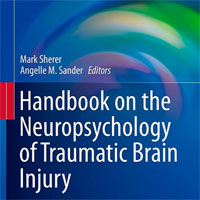Tag: sepsis
Hydrocortisone treatment in early sepsis-associated acute respiratory distress syndrome
In sepsis-associated ARDS, hydrocortisone treatment was associated with a significant improvement in pulmonary physiology, but without a significant survival benefit.... read more
Levosimendan Doesn’t Prevent Acute Organ Dysfunction
For adults with sepsis, levosimendan does not prevent acute organ dysfunction.... read more
Empirical micafungin treatment doesn't improve survival
Empirical treatment with micafungin seems not to increase invasive fungal infection (IFI)-free survival at 28 days for patients with intensive care unit (ICU)-acquired sepsis with Candida colonization.... read more
Hydrocortisone and Septic Shock in Patients With Severe Sepsis
This randomized clinical trial compares the effects of hydrocortisone vs placebo on development of septic shock among intensive care patients with severe sepsis who were not in septic shock.... read more
Should we treat pyrexia? And how do we do it?
Pyrexia has long been thought of as a protective physiological response to help host defences, although this is now being challenged. Despite recent advances, it remains unclear whether pyrexia or the physiological response... read more
Association of Sodium Selenite and Procalcitonin-Guided Therapy With Mortality
This randomized clinical trial evaluates the use of high-dose sodium selenite, with or without use of a procalcitonin algorithm to guide therapy, and its association with mortality in patients with severe sepsis.... read more
Beta-Lactam Infusion in Severe Sepsis (BLISS)
Beta-Lactam Infusion in Severe Sepsis (BLISS): a prospective, two-centre, open-labelled randomised controlled trial of continuous versus intermittent beta-lactam infusion in critically ill patients with severe sepsis.... read more
Sentinel, a Next Generation Life-Saving Sepsis Alerting Solution
Uniphy Health - a leader in mobile solutions for clinical collaboration and communications - today announced the wide-scale availability of its Sentinel sepsis alerting solution. Uniphy Sentinel is being deployed on the Uniphy... read more
Belgian scientists discover missing link in septic shock
Researchers at VIB and Ghent University have discovered an important mechanism of sepsis, an overreaction of the body’s immune system to an infection.... read more
Researchers tap Mayo, Christiana Care EHR data to fight sepsis
In an effort to improve the diagnosis and treatment of sepsis, records data will be used to help understand how to beat the disease. ... read more
Long-Term Quality of Life Among Survivors of Severe Sepsis
Severe sepsis currently accounts for 10% of all intensive care unit admissions and is the leading cause of death in U.S. hospitals. Studies have shown that sepsis survivors suffer from many long-term after-effects.... read more
AF in Sepsis: Choosing the Right Therapy
It seems that during almost every intensive care unit shift, at least one patient goes into atrial fibrillation (AF). There are several treatment options, including calcium channel blockers (CCBs), beta-blockers (BBs), digoxin,... read more
Doctors, hospitals, advocates push for education on killer sepsis
Many people don't know about sepsis. Meanwhile, health care providers struggle to identify it early. Sepsis kills more than 250,000 people every year; people at highest risk are those with weakened immune systems.... read more
Is SIRS dead? The new definition of sepsis.
To mark Sepsis Awareness Month in September, Prof Gando, Editor-in-Chief of Journal of Intensive Care, tells us more about the recent sepsis definitions, published earlier this year.... read more
N.J. hospitals work together to reduce sepsis deaths
Anyone can get sepsis. They can get it while perfectly healthy, after having a health issue or while hospitalized for a procedure or test.... read more
VIB-Ghent University research provides insights into septic shock
Researchers at VIB and Ghent University have discovered an important mechanism of sepsis, an overreaction of the body's immune system to an infection.... read more
Long-Term Quality of Life Among Survivors of Severe Sepsis: Analyses of Two International Trials
Ludwig Lin, MD, speaks with Sachin Yende, MD, MS, about his article, "Long-Term Quality of Life Among Survivors of Severe Sepsis: Analyses of Two International Trials," published in Critical Care Medicine.... read more
Utilising the immune system in the fight against sepsis – On Medicine
In this blog, Dr. Naoshi Takeyama, Senior Editor of Journal of Intensive Care, discusses about how knowledge of immuno-oncology can also be applied to strategies for managing sepsis and severe trauma.... read more
Researchers map links between salmonella, sepsis
Research by industrial engineering and biology researchers marks a significant milestone in the battle against sepsis, the second highest cause of death in intensive care units in the U.S.... read more
Latest sepsis research for health care providers
The syndrome, caused by "the body's overwhelming and life-threatening response to infection, which can lead to tissue damage, organ failure, and death," can be difficult to predict, diagnose and treat, according... read more
New Podcast Follows Up on SSC Concepts and Implementation
In the newly available iCritical Care podcast SCCM Pod-326 Surviving Sepsis Campaign: Creating Spread for Quality Improvement, Ludwig Lin, MD, speaks with Jane Taylor, Ed.D, about quality improvement science and her contributions... read more









